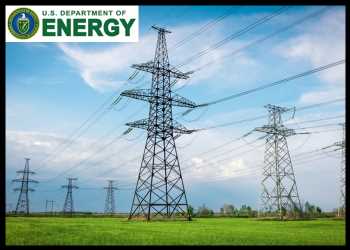The U.S. Department of Energy has announced $42 million for 15 projects across 11 states to improve the reliability, resiliency, and flexibility of the domestic power grid through the development of next-generation semiconductor technologies.
Funded through DOE’s Unlocking Lasting Transformative Resiliency Advances by Faster Actuation of power Semiconductor Technologies (ULTRAFAST) program, the technologies being developed would enable more effective control of grid power flow and better protection of critical infrastructure assets.
Streamlining the coordinated operation of electricity supply and demand will improve operational efficiency, prevent unforeseen outages, allow faster recovery, minimize the impacts of natural disasters and climate-change fueled extreme weather events, and reduce grid operating costs and carbon intensity.
“Modernizing our nation’s aging power grid is critical to strengthening our national and energy security, and absolutely essential to reaching President Biden’s ambitious goal of a net-zero economy by 2050,” said U.S. Secretary of Energy Jennifer M. Granholm. “This new investment will support project teams across the country as they develop the innovative technologies we need to strengthen our grid security and bring reliable clean electricity to more families and businesses—all while combatting the climate crisis.”
Here is a nutshell of a number of projects selected for ULTRAFAST program:
GaNify (State College, PA) will develop an optically isolated, power-integrated building block that would enable enhanced control of power electronics converters for a more efficient and reliable grid.
Georgia Institute of Technology (Atlanta, GA) will develop a novel semiconductor switching device from wide-bandgap III-Nitride material to improve grid control, resilience, and reliability.
Great Lakes Crystal Technologies (East Lansing, MI) will develop a diamond semiconductor transistor to support the control infrastructure needed for an energy grid with more distributed generation sources and more variable loads.
Lawrence Livermore National Laboratory (Livermore, CA) will develop an optically-controlled semiconductor transistor to enable future grid control systems to accommodate higher voltage and current than state-of-the-art devices.
NextWatt (Hoffman Estates, IL) will develop an ultrawide-bandgap optical triggered device that addresses the need for fast protection for solid-state transformers, a promising technology for revolutionizing substations and renewable energy systems.
University of Arkansas (Fayetteville, AR) will develop a heterogeneously integrated high-power semiconductor module for applications in the electric power grid and electrified transportation.
Source: Read Full Article
-
What a Few Seconds of Hand Raising Said About Trump’s G.O.P.
-
Analysis: Inside Alvin Bragg's ambitious Trump indictment
-
Unite boss warns There could be ‘Up to a million people on strike’ …
-
Rishi blasted for being blind to China threat and only realising danger late
-
Furious backlash as Biden prepares to appoint Joe Kennedy to NI role

